![]()
In response to the efforts of Marcos apologists to disseminate the image of the Marcos dictatorship from 1972 to 1986 as a “Golden Age,” many analysts have rightfully described it as more akin to a dark age. What both sides often forget, however, is that Marcos was not alone in creating what one side sees as an era of milk and honey and the other as years of infamy.
Economic management during the Marcos era was always a joint venture between the regime and the World Bank.
This is, of course, a critical piece of history that the World Bank, which continues to have a strong institutional presence in the country, would prefer to consign to oblivion. But the fact is, the Bank provided Marcos a curtain of international legitimacy behind which he and his cronies plundered the public till. Moreover, the marriage of the Bank’s pro-market policies and the regime’s predatory practices gave birth to the worst of all possible worlds for Filipinos.
Looking back at the Marcos era, it is tempting to depict the Marcos regime as a “failed developmental state.” It was the promise of development that accounted for the way that Marcos was able to initially assemble a coalition of left-leaning people like Blas Ople, military technocrats like Alejandro Melchor, corporate managers like Cesar Virata, and elite personalities like Manda Elizalde to support his thrust toward dictatorship in the early 1970’s.
‘Revolution from the center’
Marcos’ project, building on his infrastructure building during his two terms as president, was labeled as the “revolution from the center” that would break the “democratic stalemate” that had prevented development.
Enthusiastically joining this ambitious project was the World Bank, then headed by Robert McNamara, the former U.S. defense department chief who had managed the unsuccessful U.S. war in Vietnam in the 1960s.
This program of conservative modernization or “development from above” was inspired by the apparent success of the Brazilian military-technocrat alliance in bringing about high growth rates in Brazil in the late sixties and the concurrent push of the Park Chung Hee regime to promote high-speed growth in South Korea. By the early '70s, these two experiences had created in political and economic development circles a zeitgeist of disillusionment with democracy as a development mechanism and a fascination with authoritarian approaches to “modernization.”
The appeal of Marcos’ revolution from the center to western development specialists was its promise to weaken the power of land-based elites that stood in the way of the capitalist modernization of the economy while stealing the thunder of left-wing and nationalist forces advocating a more radical transformation of the economy.
It offered an opportunity to apply what had become the new silver bullet for breaking out of underdevelopment: export-oriented industrialization (EOI), which would open up limitless global markets that would substitute for the limited domestic market as an absorber of a country’s products. Meanwhile, stability in the countryside would be promoted by Taiwan and Korea-style land reform that would create a conservative base of “kulaks” or small property owners that would serve as a barrier to peasant-based insurgent movements.
In the division of labor to promote this scheme, the World Bank, international private banks, and foreign investors would supply the resources while Marcos would provide the “political will.”
In terms of financing the venture, the Bank delivered, with the Philippines joining South Korea, Brazil, and Indonesia – all dictatorships – at the top of the list of Bank recipients. The Philippines was designated a “country of concentration” to which the flow of Bank assistance would be “higher than average for countries of similar size and income.”
Whereas prior to martial law, between 1950 and 1972, the Philippines received a meager $326 million in Bank assistance, between 1973 and 1981, more than $2.6 billion was funnelled into 61 projects. If before martial law, the Philippines had ranked around thirtieth among recipients of Bank loans in cumulative terms, by 1980 it placed 8th among 113 developing countries.
Seal of approval
But the principal contribution of the Bank was not financial, though this was of course indispensable. It was the provision of legitimacy. The partnership with the Bank provided Marcos with a patina of moral approval that he exploited in drawing more financial resources from international banks and economic aid from western governments.
The private banks also delivered, with debt owed to them rising from 27.3% of a total of $2.0 billion in total external debt in 1972 to 46% of $24.5 billion in 1983.
The seal of approval given the regime by the World Bank and the International Monetary Fund (IMF) opened the coffers of a wide range of international banks. As of 1985, the 4 commercial banks with the greatest exposure in the Philippines were US-based: Citibank ($1.8 billion), Manufacturers Hanover Trust ($489 million), Bank of America ($487 million), and Chase Manhattan Bank ($427 million). Behind them were Bank of Tokyo ($404 million), Barclays Bank ($386 million), Bank of Montreal ($362 million), Banque Nationale de Paris ($284 million), Credit Lyonnais ($267 million), and Morgan Guaranty Trust ($252 million), and Fuji Bank ($251 million).
Direct foreign investors seemed less sanguine, from a superficial survey of the figures. Between 1973 and 1980, only $839 million entered the Philippines, a much smaller figure than the capital flowing to neighboring areas such as Singapore, Hong Kong, or South Korea. Moreover, net inflow of foreign investment – foreign investment inflow minus the outflow of investment income – came to only $87 million between 1973 and 1979.
This did not mean, however, foreigners were investing less. Indeed, the Bank asserted that in 1980, investment by foreign firms came to 500 per cent more than the annual average for the 1970s.
These new investments were financed mainly from local profits or borrowings from domestic capital sources. Thus, while foreign capital inflow slowed to a trickle, foreign corporations raised their cumulative borrowing from local sources from $1.9 billion in 1973 to about $3 billion in 1977, according to one estimate.
Marcos: Expectations and performance
What about Marcos? Did he live up to the expectations of his patrons?
When it came to agrarian reform, the creation of a kulak stratum that would defuse insurgency as in Taiwan and South Korea failed miserably.
Announced with bombast at the beginning of martial law in 1972, the program gave birth to a mouse: by the end of 1980, effective owners, or those who received “emancipation patents” for their lands came to a meager 1700 tenants. Claiming to be a partisan of agrarian reform, the World Bank traced the failure of the program to what it called Marcos’ lack of “political will.”
As the Bank’s agricultural loan officer put it, “Land reform is not amenable to halfway measures. Either the landlord owns the land, or the tiller does. To make that radical change requires more commitment and energy than the Marcos administration has yet been able to demonstrate.”
When it came to export-oriented growth, the regime did set up export-processing zones where foreign investors could exploit an unorganized, cheap, and largely female labor force and benefit from tax breaks. However, EOI was supposed to be accompanied by the dismantling of the protective tariffs and quotas that the Bank saw as sheltering “inefficient” local industries from foreign competition. Reluctant to forfeit the political support of the owners of traditional industries, Marcos dragged his feet, earning the ire of the Bank.
Marcos and those of his technocrats who believed in industrial policy were also unwilling to give up on their plan for import substitution in intermediate and capital goods industries.
Unveiled in 1979, the so-called “11 Big Industrial Projects,” which included a copper smelter, a petrochemical complex, and an integrated steel project, were conceived as the backbone of a modern industrial sector. As it did in Korea, where it opposed the Heavy and Chemical Industry (HCI) program of the Park regime, the Bank also strongly discouraged Marcos from pursuing the heavy industry scheme on the ground that it would constitute an inefficient use of resources. But unlike in Korea, where the Park regime was able to hustle up internal resources to finance the HCI program, the World Bank’s disapproval effectively scuttled the Philippine program by discouraging international private banks from providing external financing.
The failure to move against the tariff walls protecting Philippine industry was not the biggest point of contention between Marcos and the World Bank.
This was reserved for Marcos’ relationship with the powerful men of business who surrounded him, who were deriving tremendous benefits from their closeness to him. These people, among them Danding Cojuangco, Herminio Disini, Roberto Benedicto, and Ricardo Silverio, were seen as derailing the program of foreign investment-friendly capitalist modernization that the Bank had in mind for the country.
Not only were these people establishing new monopolies, like Cojuangco did over the whole coconut industry, but a big part of the external borrowings of the government was being channeled to them, and they in turn were recycling this to their private accounts abroad. Capital flight from the Philippines exceeded that of Brazil, Korea, and even Indonesia.
Marcos and his family were, of course, the principal recyclers, with estimates of their loot parked abroad ranging from $2 billion to $20 billion.
From ‘developmental state’ to predatory state
Even as the regime’s official rhetoric painted the regime as a developmental state, the reality was that it was turning into what Peter Evans called the predatory state, where, as in Mobutu’s Zaire, the whole state apparatus was being turned into a mechanism for ruthlessly extracting resources by the president and his cronies without offering anything of value in return.
This could not go on indefinitely, without endangering the rationale for pouring hundreds of millions of aid dollars into the country, which were supposed to put it on the path of development. Moreover, the gap between a favored few monopolizing resources and the many whose conditions of life was deteriorating threatened even more political instability.
The income of rice farmers declined by a whopping 53% between 1976 and 1979, while the wages of urban workers dived at roughly the same period by 50 per cent. A poverty mission from the Bank that visited the country in 1979 came to the disconcerting discovery that the real income of Filipinos between the early sixties and 1975 had dropped “in both urban and rural areas, in all regions, and practically all occupations.”
It was at this point in the early '80s that the Bank decided to take a more direct hand in the economic management of the country.
The time seemed auspicious since the cronies’ enterprises were suffering from mismanagement and the whiplash from the international recession wracking the world economy.
Cabinet of technocrats
One thrust of the takeover of economic policy was pushing Marcos to accept a Cabinet of technocrats headed by Cesar Virata, a longtime Bank ally.
While Marcos acceded to this, the cronies fought back and managed to get Virata and the Bank to agree to a bailout of their industries instead of allowing them to go bankrupt.
Instead of decisively cutting off the cronies, the Bank focused its effort on tariff liberalization, a move that hit a whole range of industrialists and entrepreneurs whose survival depended on tariffs and quotas on foreign products.
Tariff liberalization was the centerpiece of a new type of World Bank loan, the “structural adjustment” loan, that was directed not at supporting a discrete project but at “reforming” a whole sector of the economy, in this case foreign trade. On pain of incurring the wrath of the Bank had it refused, the Marcos regime was one of only five governments that agreed to accept it in the early eighties, the others being Turkey, Kenya, Turkey and Bolivia.
Between 1981 and 1985, quantitative restrictions were removed on more than 900 items, while the nominal average tariff protection was brought down from 43 per cent to 28 per cent, leading to an inflow of foreign goods that led to numerous bankruptcies of local enterprises and a rise in unemployment.
Other elements of the structural adjustment program were tight monetary and fiscal policies that practically tied the government’s hands, preventing it from taking a proactive stance in the economy. Fiscal and monetary intervention was critically important in the early eighties since, already on the brink since the late seventies, the Philippines was pulled under by the deep global recession of that period.
Partnership unravels
It was during this economic crisis, the most severe in the country’s post-war history, that the Marcos-World Bank alliance unraveled.
It was a downward spiral produced by the deadly brew of structural adjustment, economic mismanagement, predatory practices, loss of political legitimacy on the part of the regime, and an inhospitable international economic environment.
Instead of allowing the government to promote countercyclical mechanisms to arrest the decline in private sector activity, the structural adjustment framework intensified the downturn with its policy of high interest rates and tight government budgets. Not surprisingly, the gross national product (GNP) shrank precipitously two years in a row, contributing to the deepening of the political crisis that resulted in the ousting of Ferdinand Marcos in February 1986.
Between 1982 and 1985, the Gross National Product (GNP) plunged by 10% and GNP per capita by 15%. Inflation ran at 50%in 1984 and 23% in 1985.
By the time Marcos was overthrown, the Philippines’ foreign debt had risen from $5 billion in 1977 to $26 billion. People living in poverty rose from 38.7% of the population in 1971 to 49.3% in 1985.
The miserable economic performance during the whole period of the dictatorship was reflected in the fact that average annual Gross Domestic Product (GDP) growth fell from 6.2% in 1962-1974 to 3.6% in 1974-1986.
The policies of the Marcos period left their mark on the “EDSA Republic” that succeeded Marcos.
Perhaps the key legacies were the servicing of the Marcos debt and the institutionalization of structural adjustment. Following the “good debtor” policy forced on her by IMF, the World Bank, and foreign private creditors, the Corazon Aquino administration committed itself to paying off the whole of the $26 billion that Marcos regime had contracted, a process that took the better part of the next two decades and involved devoting from 20 to 45% of the annual government budget of the succeeding administrations to debt service.
Agreement to structural adjustment became the sine qua non of further loans from the Bank and the IMF, and with this process came not just tariff liberalization and cutting back on spending but deregulation and privatization of public enterprises and public services like water and energy provision. Radical liberalization of tariffs, especially during the Ramos administration, succeeded in killing off much of what remained of the Philippine manufacturing sector and plunging agriculture into crisis.
Paying off the Marcos debt and structural adjustment had a depressive effect on Philippine growth, with the economy growing at a minuscule 1.5 per cent per annum between 1990 and 2010, the second lowest growth rate in Southeast Asia.
Deadly legacy
In sum, Philippine economic policy during the Marcos period must be seen as the product of a partnership between the regime and the World Bank.
The two had shared perspectives on the conservative direction of development, but they had contradictions in other areas.
Both embraced export-led growth, but they differed in other matters, like the emphasis that should be put on agrarian reform and on ending the protectionist structure of Philippine industry. Their most important point of divergence, however, was the role of the cronies, whose close relationship to Marcos prevented, in the Bank’s view, the necessary reforms because these would harm their interests.
The Bank was also concerned with the fact that, along with Marcos, they were taking a huge cut of the loans being contracted by the country and shipping this to foreign bank accounts. In its later years, the regime had degenerated into a purely predatory regime, focused on extracting as much resources as possible from a collapsing economy.
The Bank finally forced a World Bank-led cabinet on a reluctant president, and the main task of this body became the imposition of structural adjustment, the principal element of which was tariff liberalization, which hit not so much the cronies but local industrialists dependent on a protected market as well as the workers of their establishments, which were unable to withstand competition from foreign imports.
The partnership between the Bank and Marcos unraveled as the Philippines entered its worst post-World War II economic crisis in 1983-86, which was brought about by a deadly mix of an international recession, predatory practices on the part of Marcos and his cronies, and structural adjustment by the Bank.
The legacy of the Marcos period has been hard to shake off.
Despite 5-7% growth rates over the last few years, some 25% of the population lives below the poverty line, probably the highest in Southeast Asia. The country’s gini coefficient, the most reliable measure of inequality, stands at a very high 50, at par with China’s.
Of course, most of the blame for poor economic performance after 1986 lies with the administrations that came after Marcos, but that Marcos’ deadly legacy was a heavy burden that they carried cannot be disputed. – Rappler.com
Walden Bello was the principal author of Development Debacle: The World Bank in the Philippines (San Francisco: Food First, 1982). Currently the International Adjunct Professor of Sociology at the State University of New York at Binghamton, he served as a member of the House of Representatives of the Philippines from 2009 to 2015. A retired professor of the University of the Philippines, he is the author of 23 books, the latest of which are Counterrevolution: The Global Rise of the Far Right (Fernwood, 2019) and Paper Dragons: China and the Next Crash (Zed, 2019).
![]()

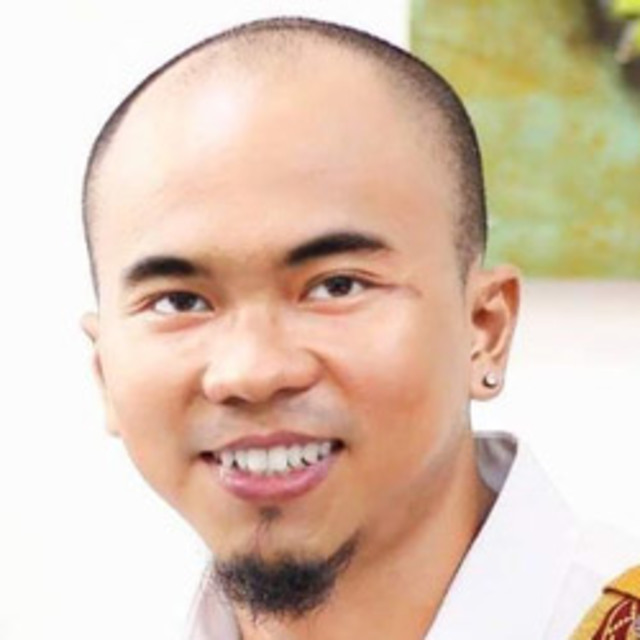











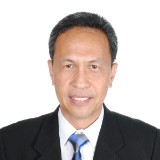


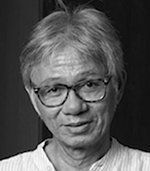



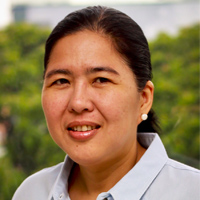



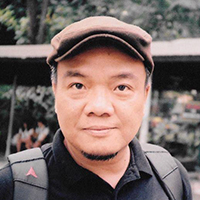 Kailangan kong i-quote ang pamagat kasi hindi ako ang nagsabi niyan. Nababasa ko lang iyang “Maligayang Pagtatapos!” sa mga tarpaulin na nadaraanan ko kung saan-saan. Iyan ang nakasulat kasama ang naglalakihang pagmumukha ng mga pulitikong sumailalim sa sensitibong operasyon ng Photoshop.
Kailangan kong i-quote ang pamagat kasi hindi ako ang nagsabi niyan. Nababasa ko lang iyang “Maligayang Pagtatapos!” sa mga tarpaulin na nadaraanan ko kung saan-saan. Iyan ang nakasulat kasama ang naglalakihang pagmumukha ng mga pulitikong sumailalim sa sensitibong operasyon ng Photoshop.



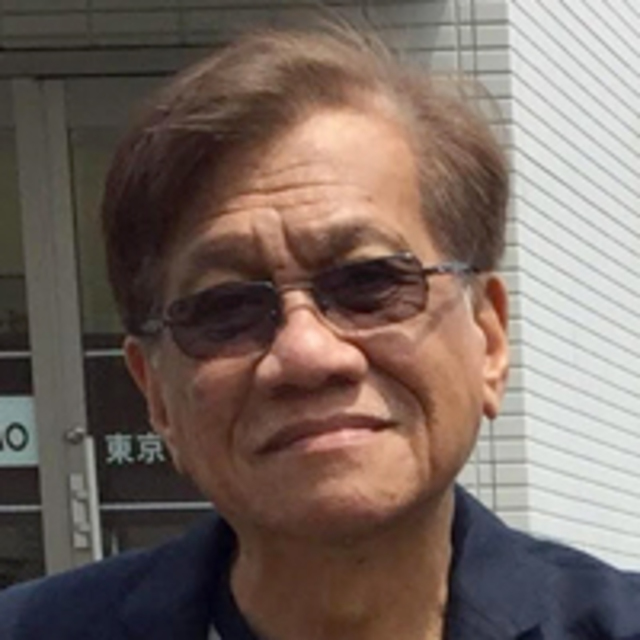





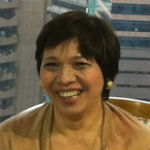

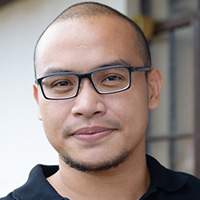 Our campaign finance law, Republic Act 7166,
Our campaign finance law, Republic Act 7166,








